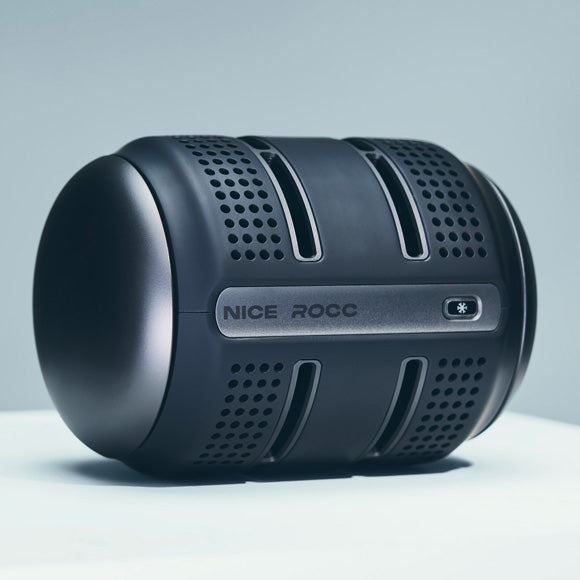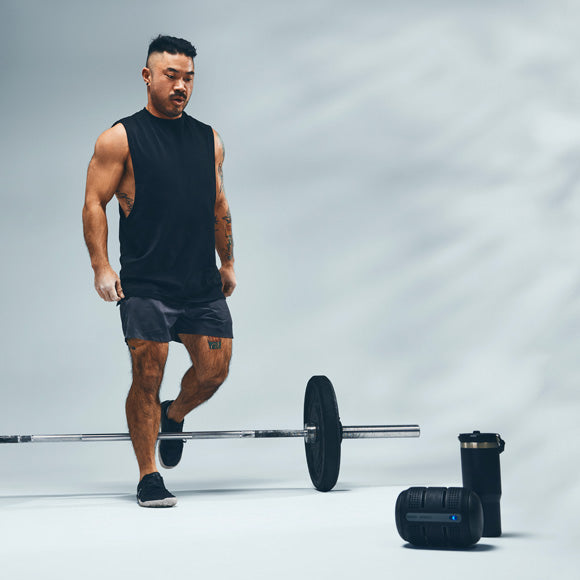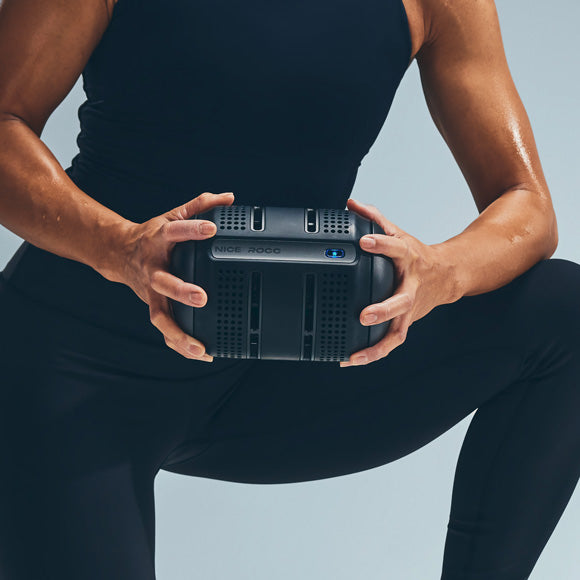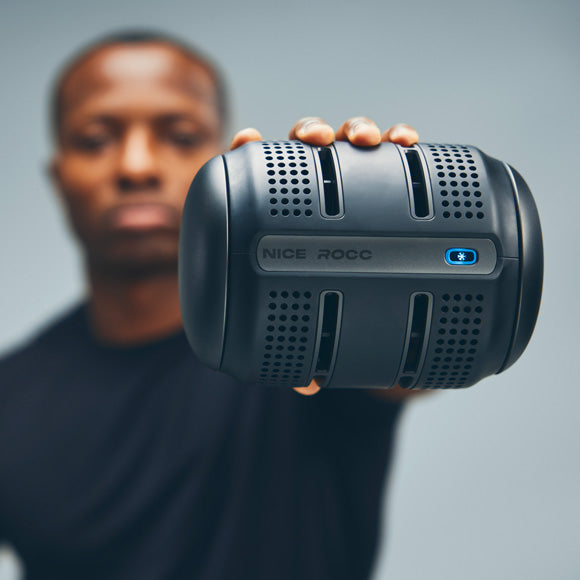Managing core temperature is often the hidden factor that can make or break an athlete’s performance. When excessive heat builds up in working muscles, everything from strength and endurance to focus and recovery can suffer. Over the past 20 years, a growing body of research has highlighted palming cooling—a targeted, science-based method of lowering the body’s internal temperature through the palms—as one of the most effective strategies for maintaining peak physical output.
Many athletes discover that by leveraging specialized blood vessels in the palms, they can rapidly and precisely remove heat without risking vasoconstriction, a common problem when skin is exposed to extremely cold temperatures like ice baths. In this article, we will explore various palm cooling techniques, explain the physiological science, discuss who benefits most from these methods, and provide practical guidelines for integrating palming cooling into diverse training regimens. From high-intensity weightlifting sessions to endurance sports like long-distance running, the ability to manage heat can transform good performances into great ones.
Why Core Temperature Matters
The Mechanics of Overheating
When you exercise, your muscles generate heat as a byproduct of metabolic activity. While a mild temperature rise can improve flexibility and enzyme function, excessive heat has the opposite effect. Enzymes essential for energy production—particularly those responsible for synthesizing adenosine triphosphate (ATP)—become less efficient once muscle temperatures pass an upper threshold. A 2014 study in the Journal of Applied Physiology observed that enzymes like pyruvate kinase slow down significantly under high-heat conditions, directly impacting stamina and power output.
Impact on Muscle Performance
Overheated muscles lose their ability to sustain repeated contractions, leading to a decline in strength, speed, or both. For endurance athletes, overheating can also accelerate dehydration and compromise mental clarity, especially during extended events like marathons or triathlons. By contrast, quickly lowering core temperature helps maintain enzymatic efficiency and delays the onset of fatigue—two cornerstones of improved athletic performance.
Understanding Palming Cooling
Glabrous Skin and AVAs
When we talk about palming cooling, we’re referring to leveraging a unique feature of the body’s circulatory system in glabrous skin areas—skin without hair follicles, such as the palms, soles of the feet, and parts of the face. These regions contain arteriovenous anastomoses (AVAs)—specialized conduits that allow blood to bypass the high-resistance capillaries. Cooling the palms effectively chills the blood flowing through these AVAs, which then travels to the heart and circulates back throughout the body. The net result is an inside-out reduction of core temperature.
Why Palms?
Cooling the palms at a moderate temperature range (typically 50–60°F) avoids the common pitfall of vasoconstriction that occurs when applying sub-freezing methods (e.g., ice baths). If blood vessels constrict, less blood is cooled and less heat is actually removed from the body. Palming cooling thus becomes a smarter, more precise approach for heat management, whether you’re in the middle of a workout or recovering afterward.
Evidence-Based Results
Numerous studies over the past 10 years confirm the efficacy of cooling glabrous skin for improved performance:
-
A 2015 article in the European Journal of Applied Physiology found that athletes using controlled palm cooling managed to sustain higher workloads than those relying solely on ambient cooling.
-
The International Journal of Sports Physiology and Performance (2019) reported that targeted palm cooling delayed fatigue in both aerobic and anaerobic tasks.
-
The Strength & Conditioning Journal (2021) reviewed multiple case studies where palm cooling led to increased training volume, particularly in repeated high-intensity exercises.
Palm Cooling Techniques: A Comprehensive Overview
Palming cooling can be approached in multiple ways. Below are the primary techniques—ranging from simple, improvised methods to advanced solutions that make use of cutting-edge technology.
1. Cooled Water Immersion (Moderate Temperature)
One of the simplest approaches is immersing your hands in moderately cool water, around 50–60°F, for short intervals (30–90 seconds). This method can be done with a small bucket or container kept at a steady temperature:
-
Pros: Inexpensive, easily accessible for home workouts.
-
Cons: Regulating the water temperature can be cumbersome. Too cold can trigger vasoconstriction, negating the benefit.
2. Cooling Towels and Wraps
Fabric wraps or towels designed to remain slightly chilled can be placed around the palms to absorb excess heat. Some variants use evaporative cooling, while others contain gels that can be activated with water.
-
Pros: Portable and widely available.
-
Cons: Hard to control or maintain an optimal temperature range. The towel may warm up quickly, limiting long-term effectiveness.
3. Gel Packs at Controlled Temperatures
Gel packs can be pre-chilled to roughly 50–60°F. Athletes might hold them during rest intervals to reduce heat in the palms.
-
Pros: Lightweight, flexible.
-
Cons: Once the gel warms, re-cooling is necessary. Additionally, monitoring the temperature to prevent it from dropping too low can be tricky.
4. Dedicated Palm Cooling Devices
High-end solutions like the ROCC from NICE Recovery Systems leverage solid-state Peltier modules to maintain a constant 50–60°F surface for as long as the device has power. This ensures consistent cooling without guesswork.
-
Pros: Precisely controlled temperature, preventing vasoconstriction. Battery-operated for portability, with no need for ice or water.
-
Cons: Requires an initial investment. However, for athletes seeking a reliable, science-backed solution, the cost is often justified.
5. Hybrid Approaches
Some athletes combine techniques—for example, using a moderate water immersion pre-workout and a dedicated device like the ROCC during the workout. This hybrid approach can extend cooling benefits across multiple phases of training.
Practical Tips for Incorporating Palming Cooling
-
Time Your Cooling Intervals
For strength or interval-based sports, short breaks between sets (60–120 seconds) can be used for palm cooling. Systems like the ROCC, featuring a haptic timer, prompt users when they’ve hit optimal cooling time—often around 1–2 minutes. -
Avoid Overcooling
Dipping below 50°F can prompt vasoconstriction, drastically limiting heat extraction. Watch for signs of numbness or tingling, which suggest the temperature is too low. -
Stay Hydrated
Water consumption remains essential to thermoregulation. A 2018 review in the American College of Sports Medicine’s Health & Fitness Journal highlighted that dehydration compounds overheating issues, diminishing the effectiveness of external cooling methods. -
Use Post-Workout
After finishing a run, a cycling session, or a strength workout, an additional few minutes of palm cooling can reduce excess heat and inflammation. This practice can speed up the transition back to baseline, making subsequent recovery measures—like stretching or compression—more efficient. -
Track Your Progress
Athletes who adopt palm cooling often see improvements in late-stage workout performance—more reps, better focus, or a second wind in endurance activities. Keep training logs to see how consistent cooling intervals affect your performance metrics.
Who Stands to Benefit the Most?
Strength Athletes
While maintaining peak muscle power is key, heavy lifting sessions generate a lot of heat. By cooling the palms during short rest intervals, powerlifters, CrossFit enthusiasts, and bodybuilders can potentially add extra reps or increase total volume without succumbing to heat-induced fatigue.
Team Sports
In basketball, soccer, tennis, or football, strategic cooling breaks—such as halftime or momentary sideline interludes—can make the difference between staying alert in the second half and falling behind due to overheating. Many professional teams have started deploying specialized cooling stations for quick palm cooling or bring palm cooling devices to the locker room and sidelines.
Endurance Competitors
Marathoners, triathletes, and long-distance cyclists can use palming cooling during pit stops or transitions to mitigate the steady build-up of heat over time. A study in the International Journal of Sports Physiology and Performance (2019) showed that continuous, moderate palm cooling aided participants in sustaining higher paces during the latter stages of endurance events.
Rehabilitation and Recovery
For athletes undergoing rehab from injuries, controlling inflammation is vital. Gentle palm cooling can ease systemic heat stress, promoting better blood flow and tissue repair without the discomfort or risks of full-body cold therapy.
Palming Cooling Techniques for Diverse Training Regimens
High-Intensity Interval Training (HIIT)
With HIIT workouts, heart rate and body temperature spike repeatedly in short bursts. Here’s a simple approach:
-
Perform a HIIT Round: 30–60 seconds of all-out effort.
-
Engage in Palm Cooling: 45–60 seconds of moderate hand cooling using a device or controlled-temperature water.
-
Repeat: Continue until you’ve completed your planned intervals.
Circuit Training
Circuit routines combine strength and cardiovascular elements in back-to-back exercises:
-
Cycle Through Stations: Each station taxes different muscle groups.
-
Palm Cooling at the End of Each Circuit: A 1–2-minute break, specifically for cooling. This effectively resets your core temperature for the next round.
Long-Distance Running or Cycling
In extended aerobic sessions:
-
Schedule Cooling Stops: Every 30–45 minutes, take a brief pause (especially during training).
-
Use Portable Solutions: Devices like the NICE ROCC are battery-powered, allowing for quick palm cooling without tying you to a large cooler of water or ice.
Weightlifting Splits
When focusing on hypertrophy or strength:
-
Palm Cooling During Rest: Immediately after your set, apply hand cooling for one minute.
-
Evaluate Rep Consistency: Over successive sets, track whether your repetition count remains higher than it was before adopting palm cooling.
Why the ROCC Stands Out
Manufactured in the USA and designed by Studio F.A. Porsche, the ROCC from NICE Recovery Systems exemplifies state-of-the-art palming cooling. Key features include:
-
Solid-State Cooling: No ice or water needed; the device maintains a stable 50–60°F surface.
-
Haptic Timer: Offers precise interval tracking, ensuring you get optimal cooling without overshooting.
-
2+ Hour Battery Life: Perfect for extended events, multi-session training, or track-and-field meets.
-
Lightweight Build: At about 2 kg (4.4 lbs), it’s portable enough to move seamlessly between training stations.
Additionally, NICE Recovery Systems has established itself as a pioneer in performance thermoregulation, providing validated solutions for athletes who need more than conventional cooling methods can offer.
FAQ Section
Q: Is Palm Cooling Safe for Recreational Athletes?
A: Yes. Palming cooling at moderate temperatures is generally safe and can help a wide range of athletes. Always check with a healthcare professional if you have specific medical concerns.
Q: Does Palming Cooling Only Help in Hot Climates?
A: Not at all. Even in cooler environments, intense exercise can generate considerable internal heat. Controlling core temperature can be beneficial regardless of external weather conditions.
Q: Are There Any Risks of Overdoing Palming Cooling?
A: If you cool your palms below 50°F for extended periods, vasoconstriction could reduce blood flow. That’s why precision devices are recommended to keep the temperature optimal.
Q: Can I Use Regular Ice Packs for Palming Cooling?
A: Ice packs can be too cold, often dropping below 32°F. This triggers vasoconstriction and diminishes effective heat transfer. A steady 50–60°F range is best.
Q: How Often Should I Cool My Palms Mid-Workout?
A: Many athletes use one to two minutes of cooling during each rest interval or every second set, depending on workout intensity. Experiment to find the rhythm that sustains your performance the best.
Q: Will Palming Cooling Affect My Grip?
A: Generally, no. Because the temperature is moderate, the palms won’t get numb or overly wet. Dry or wipe them briefly if needed before gripping weights or equipment.
Making Palming Cooling Part of Your Routine
-
Assess Your Training Style
Decide which technique fits your schedule and environment. If you’re constantly on the move, a portable device may be the most convenient. If you train at home, a sink or small container with regulated water could be sufficient, albeit less precise. -
Start Slow
Introduce short cooling intervals—30–60 seconds—and see how your performance changes. Notice if you can do more reps, sustain sprints longer, or bounce back quickly between sets. -
Stay Consistent
Palming cooling’s real benefits become clear with regular use. Log your training data to measure improvements in work capacity, perceived effort, or total volume. -
Combine with Other Best Practices
Effective cooling is just one tool among many: pair it with proper hydration, balanced nutrition, recovery protocols like sleep and foam rolling, and a progressive training plan for maximum gains. -
Follow Up with Recovery
After intense activity, an extra cooling session can help flush out metabolic byproducts, reduce muscle soreness, and kick-start the healing process. Consistent use of cooling in both active and passive recovery settings has shown encouraging results among diverse athletic populations.
Broader Implications of Palming Cooling
-
Military and Tactical Uses
Soldiers often perform in extreme heat conditions. Quick palm cooling can mitigate heat exhaustion, preserving cognitive and physical capabilities. -
Occupational Applications
Professions that require hard physical labor in hot environments—like construction, firefighting, or manufacturing—may benefit from scheduled palm cooling breaks to improve safety and reduce fatigue. -
Medical and Therapeutic Potential
While still under study, some forms of controlled cooling have shown promise in pain management and rehab settings. With precise temperature control, the technique might help reduce inflammation in localized musculoskeletal injuries. -
Boosting Mental Resilience
Overheating not only strains muscles but can also impair mental focus. Cooling can help sustain concentration—key for sports demanding tactical thinking or fine motor skills (e.g., tennis, rock climbing, golf).
Elevate Your Performance with Palming Cooling
Whether you’re pushing for a new personal record in the squat rack or aiming to shave minutes off your marathon time, managing core temperature can unlock new levels of performance. Palming cooling techniques utilize the body’s own circulatory shortcuts in the palms, providing a simple yet potent way to curb overheating and keep your muscles firing at their best.
Modern solutions like NICE Recovery Systems’ ROCC exemplify how technology has refined this strategy, offering on-the-go cooling that remains at the ideal temperature. By integrating these methods into your workout routine—through structured rest intervals, post-training cooldowns, or quick sideline breaks—you can experience:
-
Extended stamina in high-intensity sessions.
-
Fewer dips in power output during long endurance efforts.
-
Reduced risk of performance plateaus tied to heat fatigue.
-
Faster, more efficient recovery between training bouts.
External References
-
Journal of Applied Physiology (2014). Enzymatic Constraints Under High Muscle Temperatures.
-
European Journal of Applied Physiology (2015). Targeted Cooling in Glabrous Skin for Enhanced Work Capacity.
-
International Journal of Sports Physiology and Performance (2019). Palm Cooling Strategies in Endurance and Anaerobic Sports.
-
Strength & Conditioning Journal (2021). Comprehensive Review: Palm Cooling and Exercise Performance.
(Always consult a medical professional before making significant changes to your exercise routine. Individual experiences may vary depending on health status, environmental conditions, and training intensity.)




